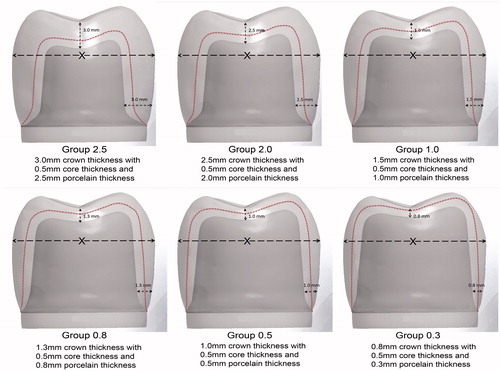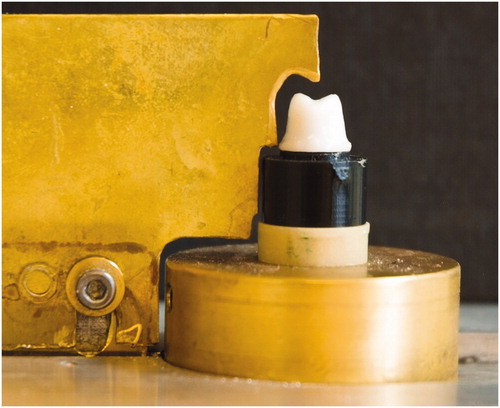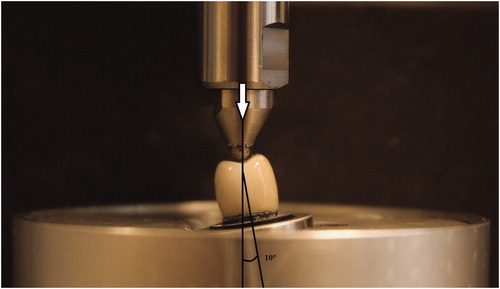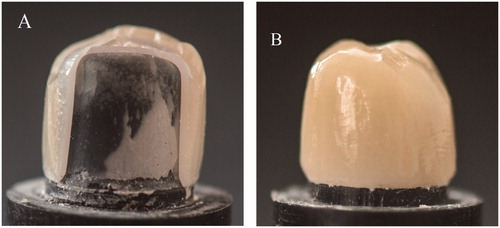Figures & data
Figure 1. An illustration showing the CAD files of the different groups with overall crown thicknesses (core/porcelain). All crowns had an equal core thickness but different porcelain thicknesses. The gradual reduction in crown thicknesses resulted in a corresponding decrease in preparation depths without changing the outer dimensions (the X-imaginary line) of any of the crowns. The red dotted line denotes the core/porcelain interface.

Table 1. Porcelain layer thicknesses in the different groups.
Figure 2. A custom-made knife used for the porcelain build-up, with a zirconia core mounted on the abutment die.

Figure 3. An illustration of the test set-up used for both the cyclic preload and the load to fracture. NB: The crowns were submerged in water, and a plastic foil was used to spread the load evenly over the loaded surfaces.

Table 2. Load at fracture in Newton.

